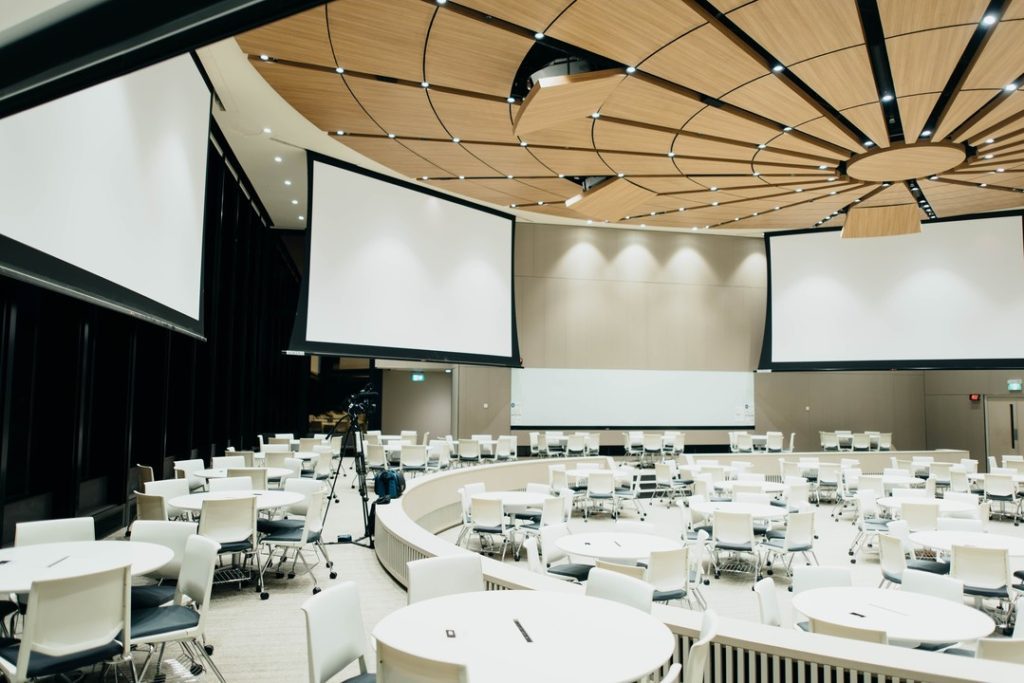For today’s workforce, both remote and in-person work has become a regular part of their work week. A part of both WFH (work from home) and the office setting that is often ignored, is audio. Let’s discuss a few audio concepts that are best for use at home and in the office.
Consider Both Sides
Whether you are taking a call in the office or at home, you must consider the audio experience that you want call participants to have, along with your own experience of call audio. Gone are the days of tinny laptop speakers and distant microphone audio being acceptable or even productive. In today’s fast-paced work environment, where details matter, good audio quality is less a luxury item reserved for dedicated conferencing spaces and more a necessity for everyday work life.
Let’s talk about some key differences between a few audio environments and some things that can be done to improve call audio quality and experience.
At Home
Let’s face it, as much as we all would like to have dedicated office space in our home, the rapid departure from corporate office space likely meant employees scattered throughout environments with differing acoustical properties, while doing their absolute best to continue with business as usual. Over time, and considering the new normal, our home office environments have greatly improved, due in part to a rapid improvement of prosumer/consumer peripheral devices, that greatly aid in audio quality improvements and the increased emphasis on virtual work sessions, video conference calls, and a general migration to cloud-based meeting environments.
In the home office environment, employees can personalize their space by selecting products that are tailored to the ergonomics of their workspace, their work style, and their mobility needs. Options for the home environment range from simple earbuds with an integrated microphone, all the way to dedicated space with large-diaphragm condenser mics, studio monitors, and acoustical treatments on walls. Each employee can choose what works best with their space and needs. Products from manufacturers such as Logitech, Blue Microphones, and various earbud manufacturers are great options here, as you have a wide range of products to choose from, at relatively affordable price points. Many of these products also employ multiple polarity patterns, allowing users to alleviate poor acoustical properties of spaces that might be less than ideal for conferencing or audio in general. External speakers are another option in the home office environment that employees can select to utilize.
Now for a few items, that without consideration, can create bad intelligibility and call quality, if not addressed.
Acoustical energy projects in a spherical pattern, regardless of frequency. This acoustic energy can be absorbed or reflected, depending on what medium the sound wave encounters. Hard surfaces such as drywall, windows, pictures, desks, and even ceilings, can all reflect audio back into a space, while softer surfaces such as furniture, rugs, and even our own bodies can absorb sound. This is why a bathroom sounds great when singing but is less than ideal when trying to have a quiet conversation. Quickly look around your home office environment…see anything that might be adversely affecting your audio quality? If you cover your ears with your hands, the sound you hear appears muffled. This is due to the higher frequencies being absorbed by your hands and not making it into your ear. The same is true with our environments.
Now, how does any of that information affect what devices may or may not be a good fit for our home office? Frankly put, certain devices are made with certain environments in mind. If your environment is a noisy one, then a microphone with a polarity pattern that provides an area of defined coverage might be a good fit. A cardioid or microphone with multiple patterns would be a good recommendation in these environments. Conversely, if your office environment is whisper quiet, an omni-directional microphone could be a good option, especially if multiple people need to collaborate around a single space.
If external speakers are utilized, whether in your laptop or freestanding desktop versions, these should be positioned to allow you to hear the audio from them, while not affecting the audio that your microphone is picking up. Another great option that alleviates this issue is earbuds. For those employees who find themselves with roommates, spouses, children, or pets – noise-canceling headphones can also help ensure that their workday has minimal distractions or interruptions, while also not negatively affecting the audio that their microphone is picking up.
What’s vital here to remember is that technology wants and needs will vary based on your home office environment. What devices you work with, your comfort level with external devices, and other factors, will all impact what products you should select for a work-from-home setup.
In-office? Go Permanent
If you’re looking for solutions for use in on-campus meeting rooms, the criteria and budget you must consider for equipment needs will be very different from the home office environment. While certain acoustical concepts still apply, the devices employed to facilitate meetings will change. This is in part because office environments and meeting rooms are typically designed with a level of acoustical consideration in mind. An additional consideration is aesthetics and furniture, which dictate the look of a device and the number of persons a solution will need to cover. Commercial AV equipment is also often left on for at least eight to twelve hours a day or more, requiring more robust power supplies and components designed with this extended utilization in mind. These considerations, along with others, greatly affect the selection of audio devices that will be utilized and integrated into a commercial meeting space.
Audio equipment that will be perfect for a small conference room, will not necessarily be a great solution in a larger environment. On the other hand, specific equipment that is ideal for your larger conference rooms is likely overkill in smaller meeting or huddle rooms. While the larger room system would provide a great experience in a smaller environment, the complexity of integration and cost would be unnecessary to accomplish the task of audio coverage and pick-up in the smaller room. This budgetary overkill can be avoided by working with a qualified AV professional and considering the space and its needs before you decide on any final AV design solution.
Regardless, Plan Ahead
Hybrid schedules, ever-changing protocols, and employee retention are all examples of items for consideration in the new working world. This elevates, and in some cases necessitates, the requirement that employers provide employees with flexible workplace options and equipment, while also requiring employees to become self-sufficient in their implementation of conferencing equipment at home. Having a plan for what equipment you’ll use, where it will go, and who will be using it, will ensure that everything runs as smoothly as possible, once the new products are in place.
If you’re unsure where to start and in need of guidance in order to develop a technology plan that accommodates today’s workspace needs, reach out to our team of experts. We Got You.



